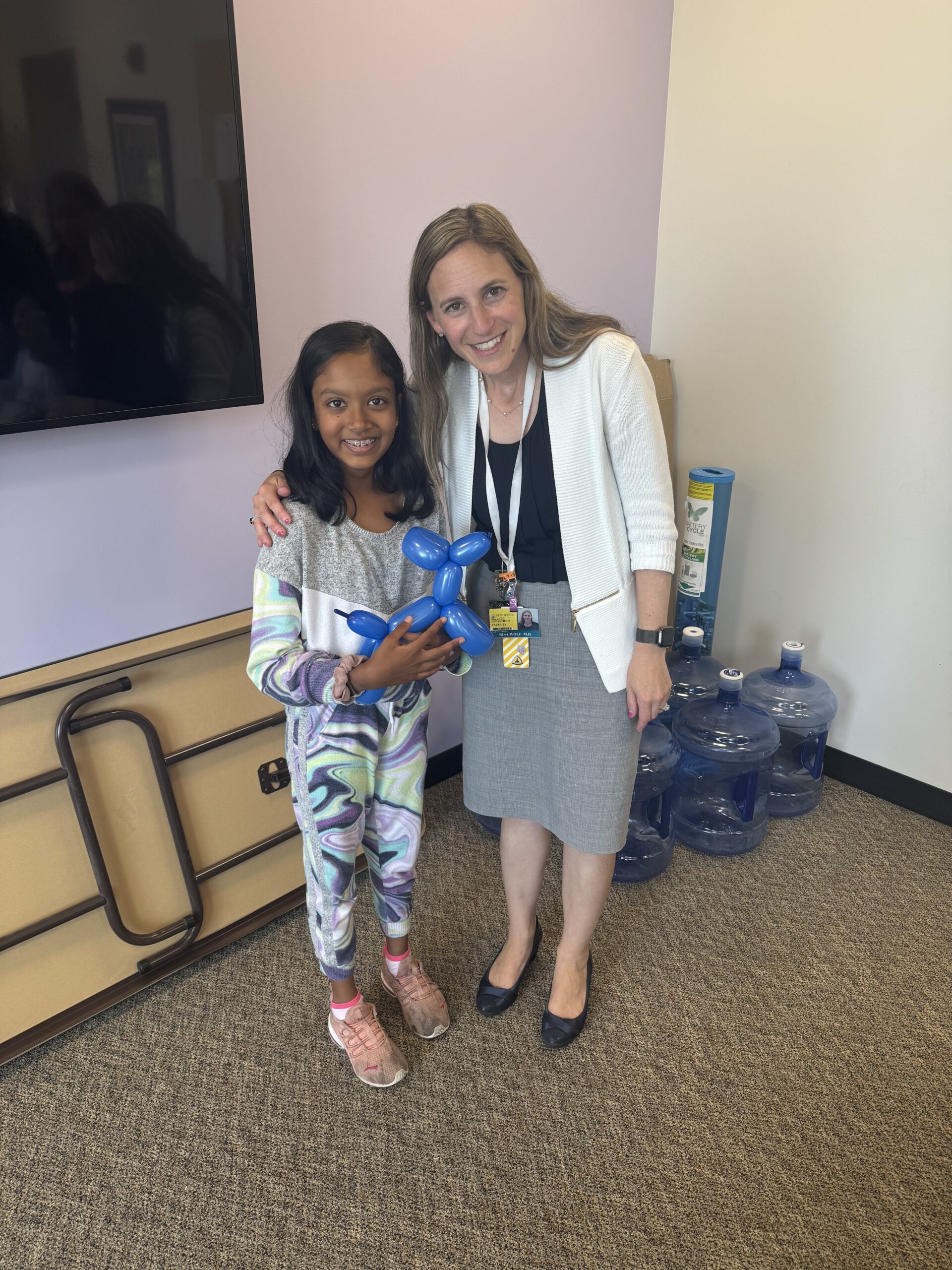Johns Hopkins UniversityEst. 1876
America’s First Research University
At Camp Charm City, mornings begin with mindfulness, afternoons might mean cupcake decorating, and on a lucky day, meeting a penguin or two. For 85 Maryland kids with type 1 diabetes, it’s also a week of connection, creativity, and fun — complete with swimming, sports, science demos, and art sessions.
Even NFL stars get involved. Two years ago, Baltimore Ravens tight end Mark Andrews, who also has type 1 diabetes, visited camp. Last year, the kids returned the favor by cheering him on at training camp.

“It fills me up for the whole year. It’s such a delight,” says Risa Wolf, MD, associate professor of pediatrics in the Division of Pediatric Endocrinology at the Johns Hopkins University School of Medicine and the founder and medical director of Camp Charm City. “It’s really wonderful to see the kids thrive in an environment outside of the clinic and also to get to know their families.”
Wolf, a National Institutes of Health-funded clinician-scientist, launched Camp Charm City in 2019 with colleague Dr. Kristin Arcara, and in collaboration with the American Diabetes Association, with support from the Thomas Wilson Foundation. Today, she’s working with individuals and families to sponsor activities and expand what’s possible for campers, ensuring each summer is not only joyful, but also deeply meaningful.
Hopkins’ reach in pediatric diabetes care and advocacy continues to grow, touching families far beyond Baltimore. In Palo Alto, California, fifth grader Myra Saxena has become an enthusiastic supporter of Camp Charm City. A competitive ballet dancer, budding app developer, and social entrepreneur, Myra began raising funds for the camp after losing her grandfather to diabetes-related kidney failure in 2021.
“She’s an amazing, entrepreneurial, high-tech-building child,” Wolf says. “She has the values of kindness and philanthropy in mind from such a young age.”
Myra has been involved with Camp Charm City for two years, sponsoring camp activities through her nonprofit, Sparklez, which sells jewelry. The platform empowers kid entrepreneurs to fundraise for a host of causes, including Hopkins’ Camp Charm City.
“It’s never too late to make a difference, and you can make it even earlier than I did,” she says. “If you have an idea, you should just go for it. It can make an impact.”

Myra says she loves Camp Charm City because it gives kids the chance to have fun while learning more about their health — something she sees as essential. She developed the Healthy Littles app during the pandemic to encourage physical activity in children. As her interest in diabetes grew, she added features to support kids with prediabetes, including macro tracking, recipe ideas, and healthy habit reminders. The app now has more than 200 users and recently earned her first place in the 2025 World Series of Innovation Imagination League Challenge, a competition hosted by the global nonprofit Network for Teaching Entrepreneurship (NFTE) for students ages 5-12. The app also earned Myra an invitation to the prestigious National Invention Convention in Dearborn, Michigan.
Myra’s mother, Sweta Sinha, says Myra’s advocacy through Sparklez and Healthy Littles is helping to empower the next generation of leaders. And because neither of Myra’s parents have medical backgrounds, Sinha credits Wolf with fostering her daughter’s interest in medicine and science. The 10-year-old is even taking biology classes on her own.
“I’m interested in genetic mutations and curing diabetes using genetics and DNA sequencing,” Myra explains, adding she’s developing an artificial intelligence score for the Healthy Littles app.
Myra’s drive to make a difference through science aligns with the mission behind Wolf’s research. While Camp Charm City offers a joyful, supportive space for kids to connect, Wolf’s NIH-funded work aims to ensure those connections are backed by the latest science in diabetes care. Wolf’s clinical trial is exploring the impact of a dedicated diabetes navigator on uptake and sustained use of diabetes technologies, like glucose monitors and insulin pumps, throughout the lifespan.
People who use these devices tend to have better diabetes management and improved blood sugar control, which is critical for preventing long-term complications. But there are significant gaps in access and use, especially among underserved communities.
That’s part of what makes the peer support at Camp Charm City so powerful. This past summer, nine campers arrived not using an insulin pump. After seeing their peers manage their diabetes with confidence and ease, seven of them chose to start using one themselves.
“The exposure of being with other kids with diabetes, and understanding that there are other people who are struggling with the same things and doing the same tasks you do every day, encouraged kids to transition to using those devices,” Wolf says. “It was a small study but really nice to see.”
As Camp Charm City continues to grow, so does its ripple effect — spanning from summer fun to year-round impact — inspiring the next generation of scientists, supporting families in real time, and shaping the future of diabetes care.
Topics: Friends of Johns Hopkins Medicine, Johns Hopkins Medicine, Promote and Protect Health